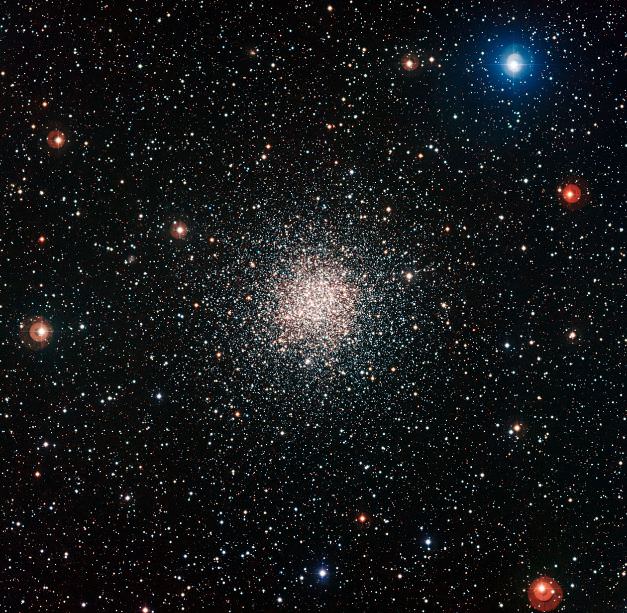This view of the globular cluster NGC 6362 was captured by the Wide Field Imager attached to the MPG/ESO 2.2-metre telescope at ESO’s La Silla Observatory in Chile. Credit: ESO/J. Emerson/VISTA. Acknowledgment: Cambridge Astronomical Survey Unit
Past observations of globular star clusters have revealed that they are some of the oldest objects in the Universe, with most of the stars originating around the same time — some are more than 10 billion years old. And this new image of NGC 6362, a ball of stars found in the constellation of Ara, definitely shows its age, with many yellowish stars in the cluster that have already run through much of their lives and become red giant stars. But astronomers are seeing some curious stellar activities in this cluster that appears to indicate younger, bluer stars are part of the mix, too.
So how can this be, since all the stars in a cluster formed at the same time from the same cloud of gas?
NGC 6362 is home to many blue stragglers — old stars that succeed in passing for a younger age. Blue stragglers are bluer and more luminous — and hence more massive — than they should be after ten billion years of stellar evolution. Blue stars are hot and consume their fuel quickly, so if these stars had formed about ten billion years ago, then they should have fizzled out long ago. How did they survive?
Right now astronomers have two main theories about blue stragglers and how they maintain their youthful appearance: stars colliding and merging, and a transfer of material between two companion stars. The basic idea behind both of these options is that the stars were not born as big as we see them today, but that they received an injection of extra material at some point during their lifetimes and this then gave them a new lease of life.
This new image shows the entire cluster against a rich background of the carpet of stars in the Milky Way. It can be easily seen by amateur astronomers with a small telescope.
This video zooms into the cluster, starting with views from the La Silla Observatory and ending with a detailed view of the center from the Hubble Space Telescope:
Source: ESO

